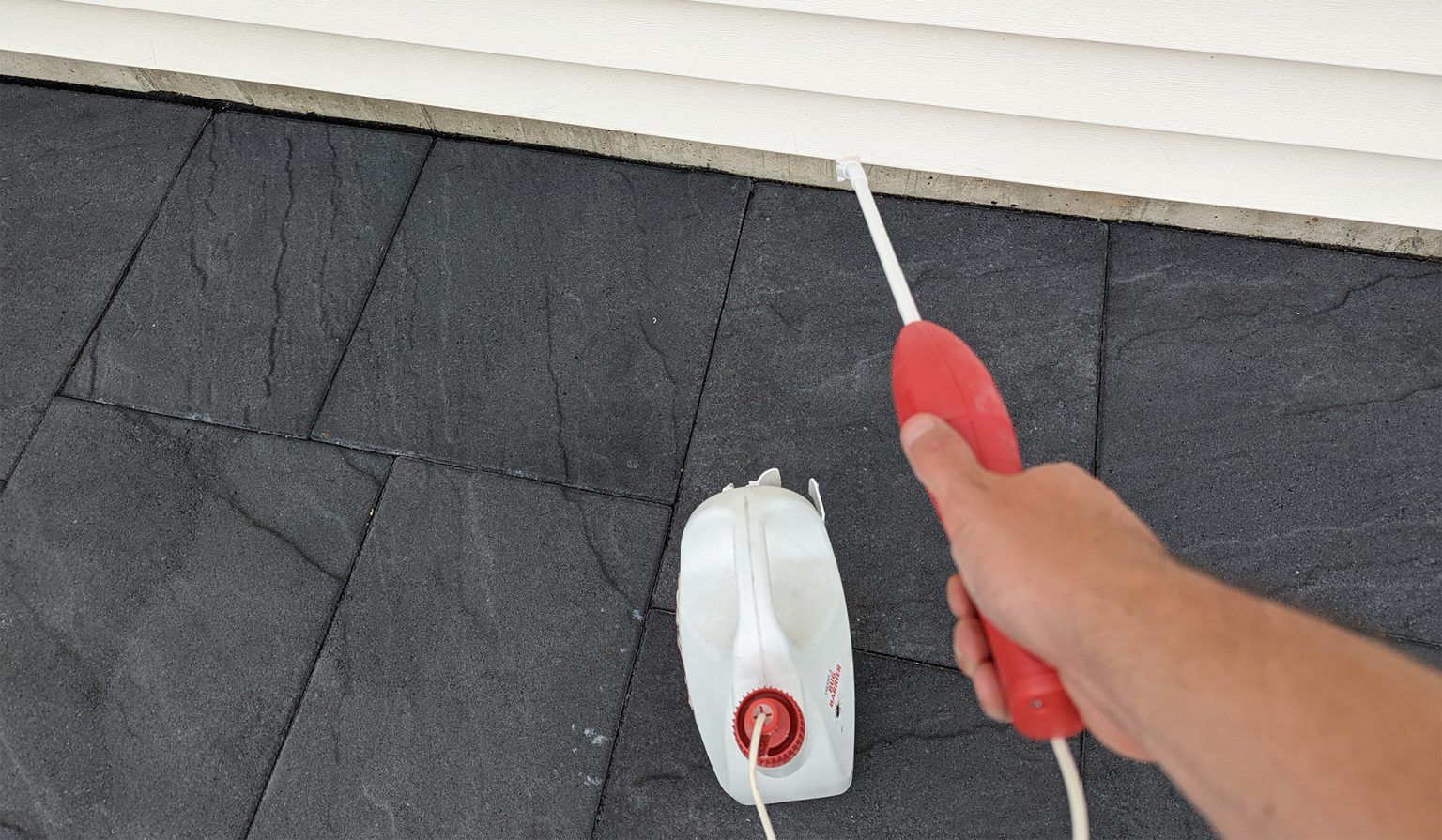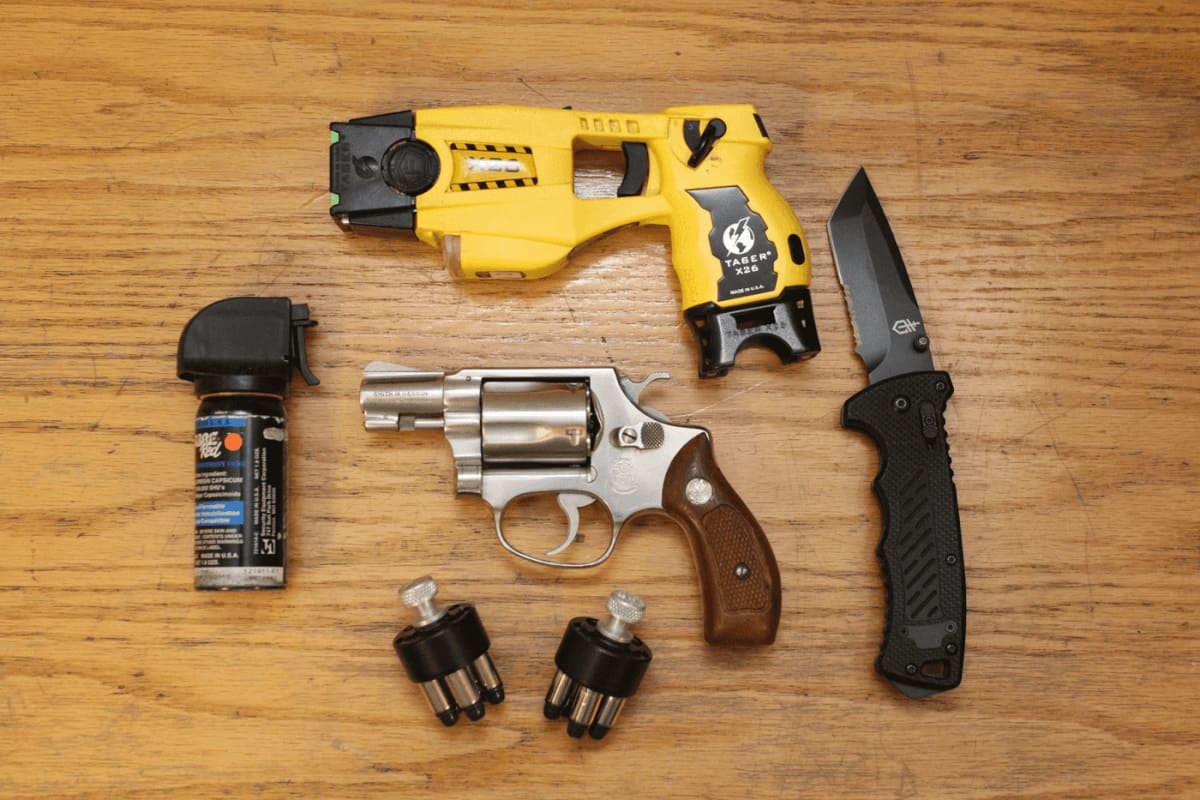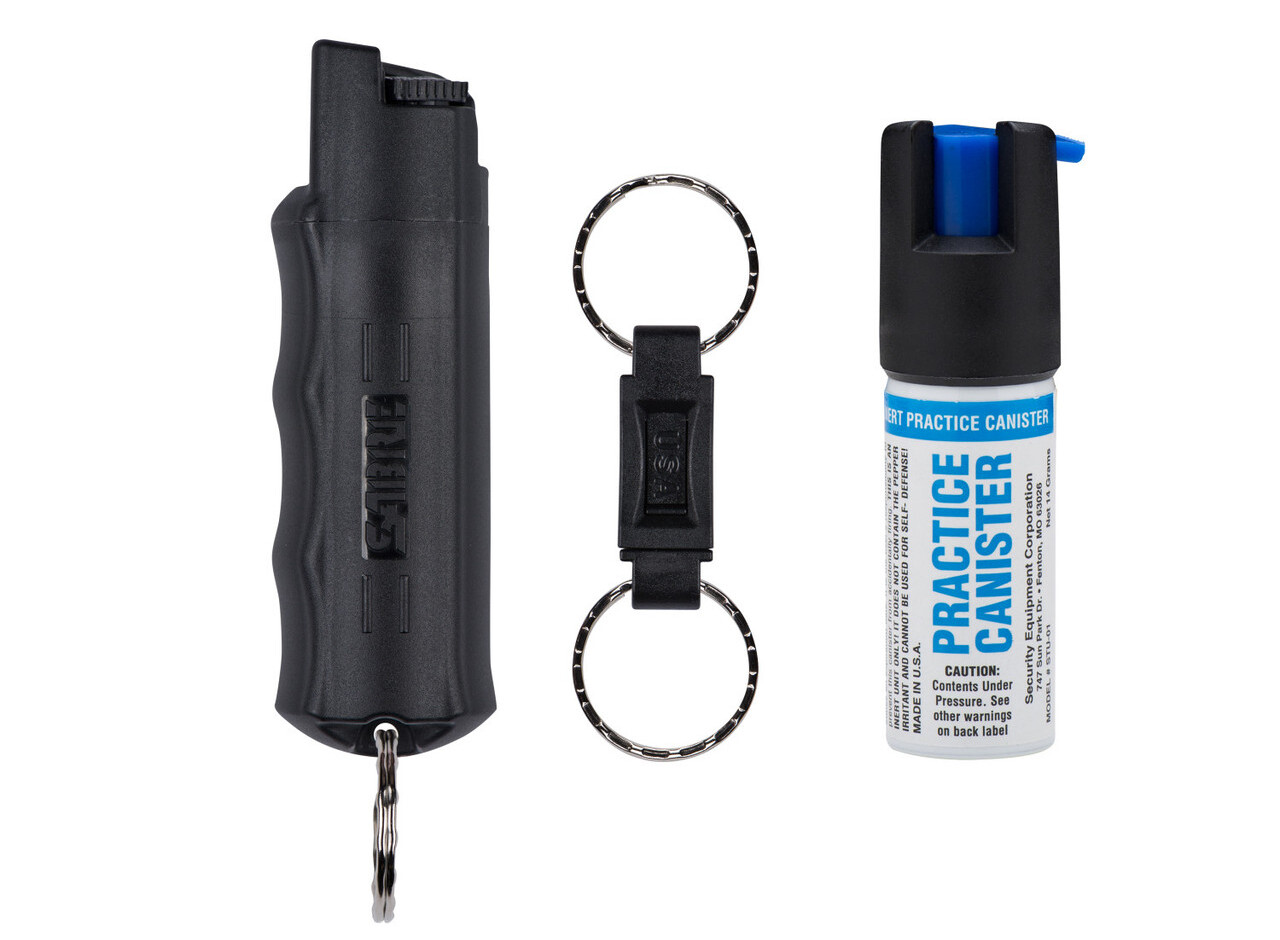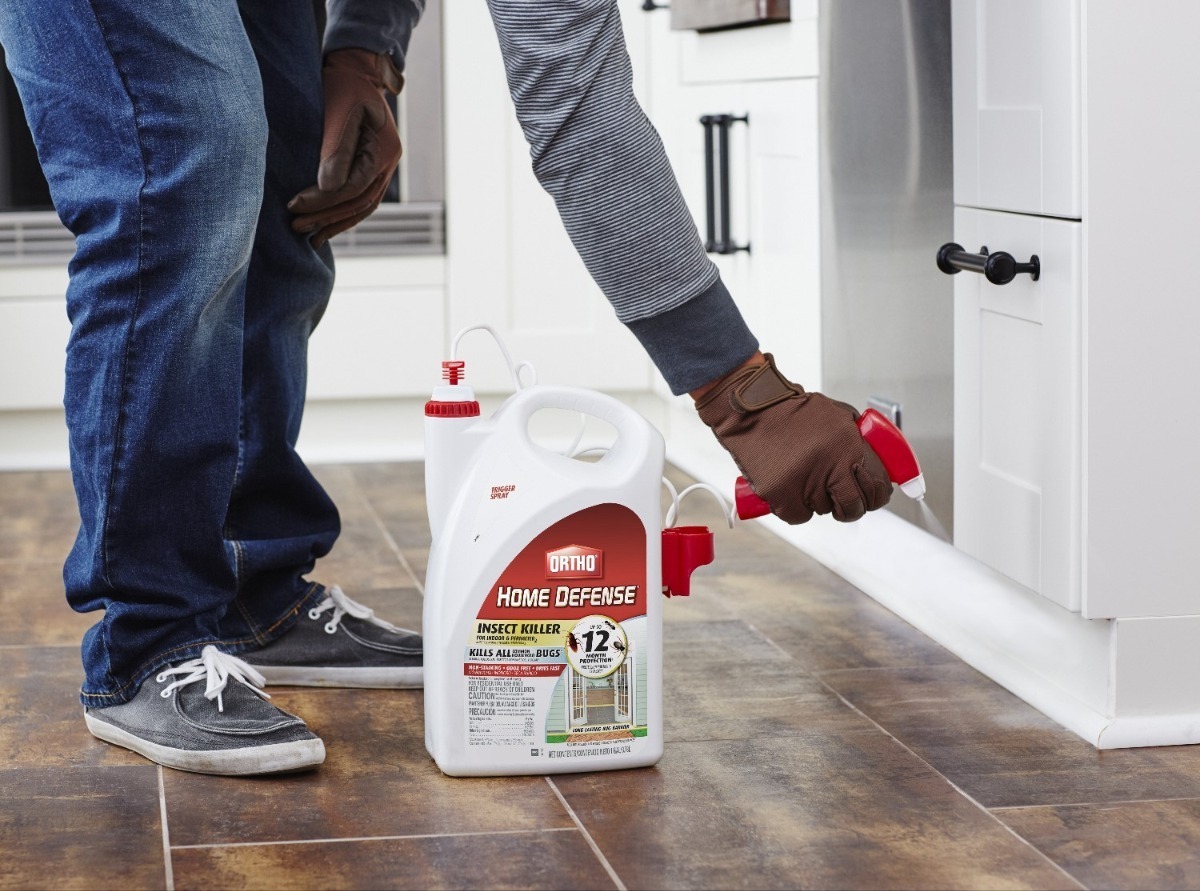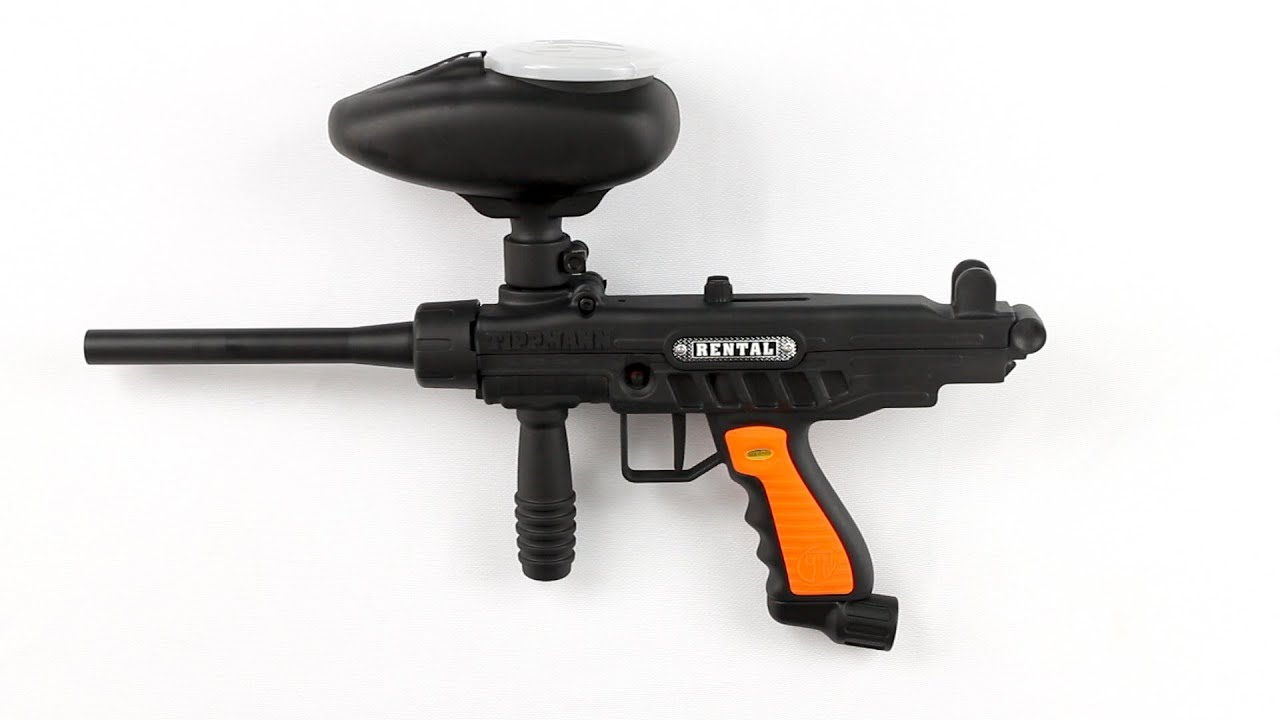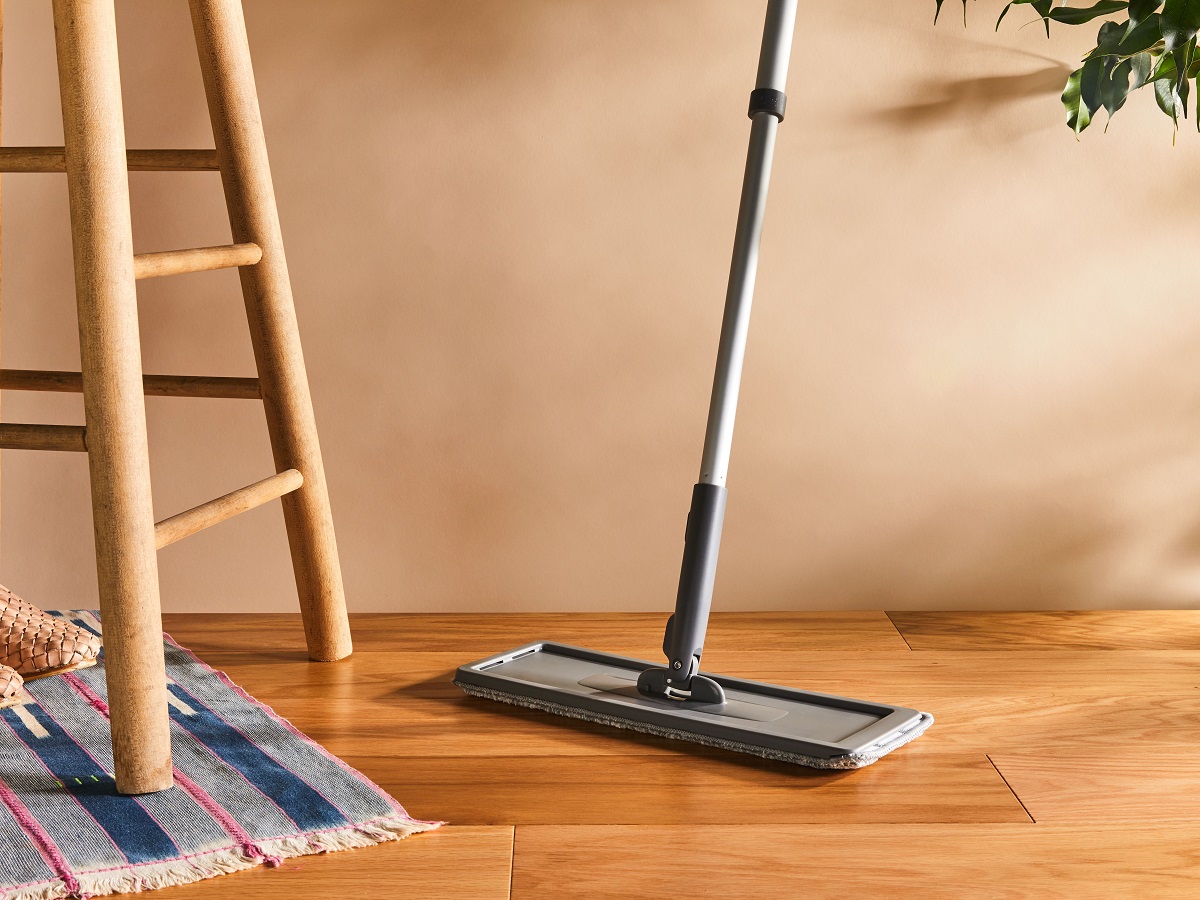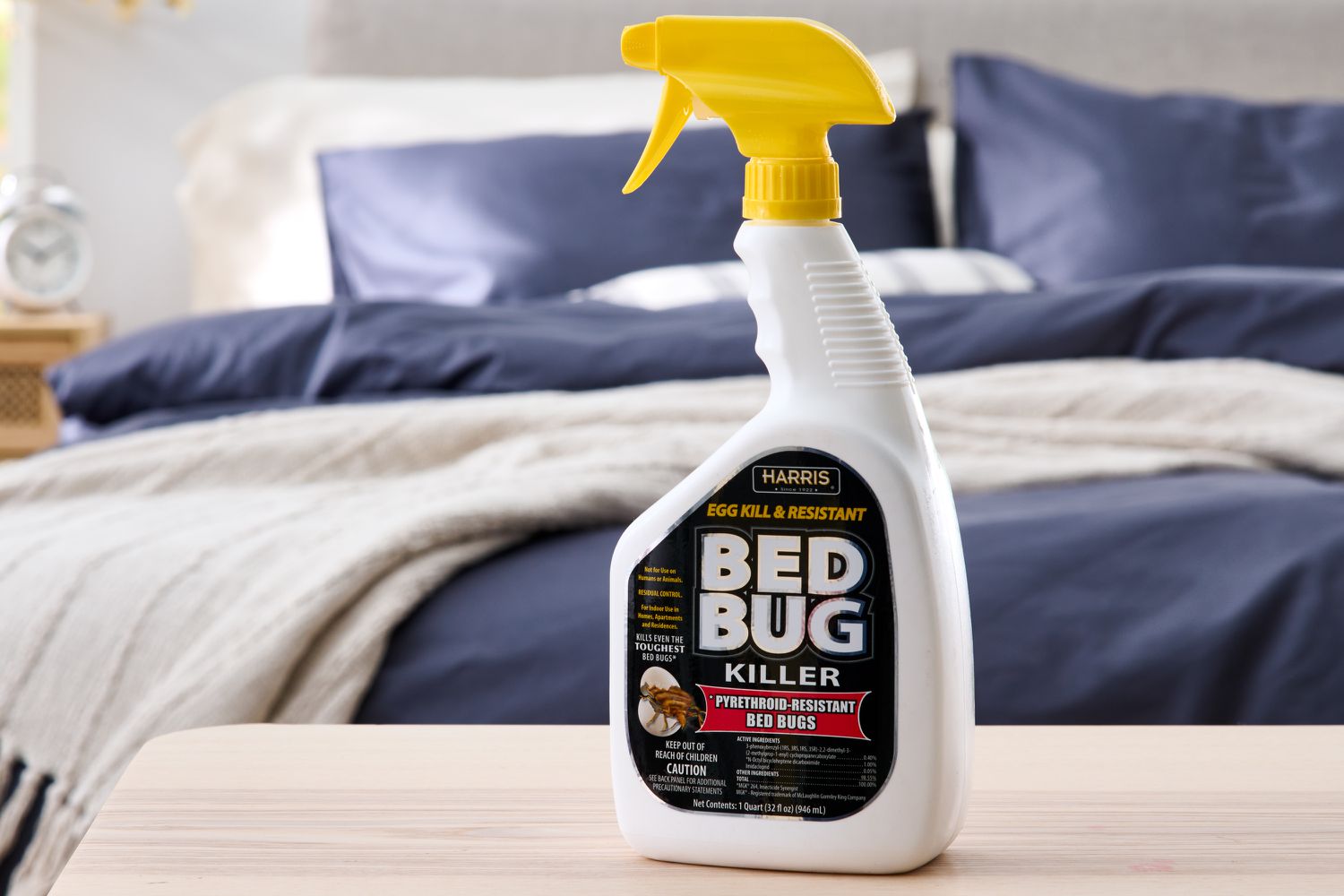Home>Home Security and Surveillance>How To Use Home Defense Bug Spray
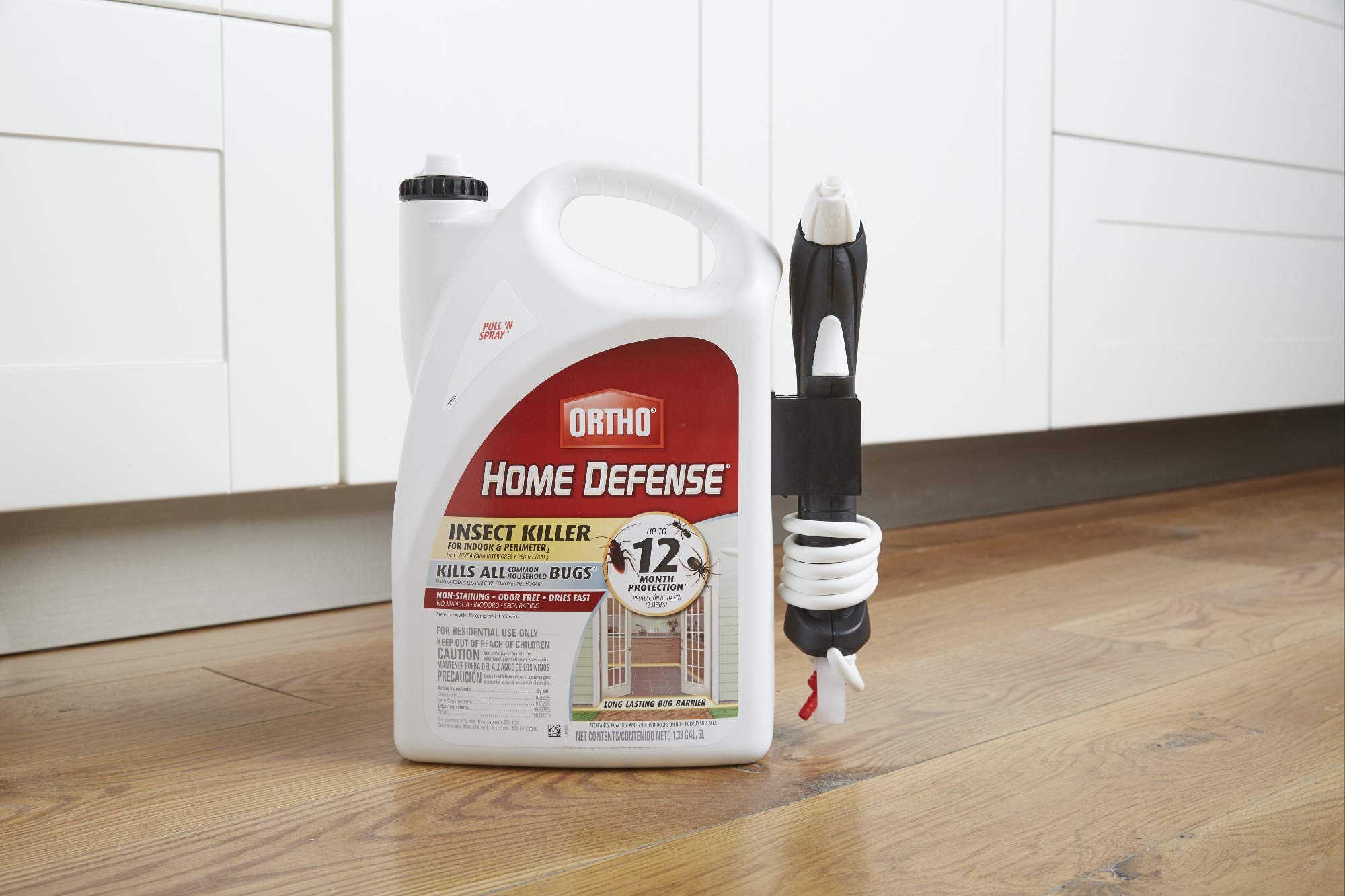

Home Security and Surveillance
How To Use Home Defense Bug Spray
Modified: August 17, 2024
Learn how to effectively use home defense bug spray for your home security and surveillance needs. Protect your home from pests and ensure a bug-free environment.
(Many of the links in this article redirect to a specific reviewed product. Your purchase of these products through affiliate links helps to generate commission for Storables.com, at no extra cost. Learn more)
Introduction
Keeping your home safe and secure is a top priority for any homeowner. One aspect of home security that is often overlooked is protecting your home from unwanted pests. Bugs, such as ants, spiders, and cockroaches, can not only be a nuisance but can also pose health risks to you and your family. That’s where home defense bug spray comes in.
Home defense bug spray is a powerful tool that can help you effectively eliminate and repel pests from your home. Whether you’re dealing with a minor infestation or simply want to prevent bugs from entering your living space, using the right bug spray is essential.
In this article, we will guide you through the process of using home defense bug spray effectively and safely. We will walk you through selecting the right bug spray, preparing for application, applying it indoors and outdoors, and the necessary safety precautions to ensure a bug-free and worry-free home.
By following our step-by-step instructions and implementing the best practices we provide, you can confidently protect your home and enjoy a pest-free environment.
Key Takeaways:
- Choose the right bug spray for your specific pest problem, considering factors like targeted pests, indoor or outdoor use, and application method. Proper preparation, application, and safety precautions are crucial for effective and safe bug spray use.
- Safely store and dispose of bug spray, and consider additional pest control methods like integrated pest management and professional consultation. Regular maintenance and cleanliness are key to maintaining a pest-free home.
Step 1: Understanding Home Defense Bug Spray
Before you start using home defense bug spray, it’s important to understand what exactly it is and how it works. Home defense bug sprays are typically formulated with chemicals that repel and kill common household pests.
One of the key ingredients in bug sprays is pyrethroids, which are synthetic versions of a natural insecticide found in chrysanthemum flowers. Pyrethroids work by disrupting the nervous systems of insects, ultimately leading to their death. These chemicals are generally safe for humans and pets when used as directed.
There are different types of home defense bug sprays available in the market, including aerosol sprays, pump sprays, and barrier sprays. Aerosol sprays are convenient for targeting specific areas, while pump sprays provide a wider coverage and are suitable for larger spaces. Barrier sprays create a protective barrier around your home to prevent pests from entering.
When choosing a bug spray, consider the specific pests you’re dealing with. Different bug sprays are designed to target specific insects, so make sure to choose one that is effective against the pests in your home. Additionally, check the product label to ensure it is safe for use indoors, if that is where you plan to use it.
Overall, understanding the components and types of bug sprays available will help you make an informed decision when selecting the most suitable product for your needs.
Step 2: Choosing the Right Home Defense Bug Spray
Choosing the right home defense bug spray is crucial to effectively combatting pests in your home. With so many options available in the market, here are some key factors to consider when making your decision:
- Targeted Pest: Identify the specific pests you are dealing with. Different bug sprays are designed to target different types of insects. Whether you’re dealing with ants, spiders, roaches, or a combination of pests, look for a bug spray that is labeled to effectively eliminate those particular insects.
- Indoor or Outdoor Use: Determine if you need a bug spray specifically for indoor or outdoor use, or one that can be used for both. Some bug sprays may have restrictions on where they can be used, so be sure to read the product label carefully.
- Chemical vs. Natural: Consider whether you prefer a chemical-based bug spray or a more natural alternative. Chemical sprays tend to be more effective against pests, but if you have concerns about the use of chemicals, there are natural options available as well, such as sprays made from essential oils.
- Application Method: Assess the application method that suits your needs and preferences. Common options include aerosol sprays, pump sprays, and barrier sprays. Aerosol sprays are useful for targeted applications, while pump sprays provide broader coverage. Barrier sprays create a protective barrier around your home to prevent pests from entering.
- Residual Action: Determine if you want a bug spray with long-lasting residual action. Some bug sprays are designed to keep working for weeks or months after application, providing ongoing protection against pests.
Once you have considered these factors, read product reviews and compare different brands to find the bug spray that best meets your requirements. It’s also a good idea to consult with professionals in the field or seek advice from friends or family members who have used bug sprays in the past.
Remember, choosing the right bug spray is the first step toward effective pest control in your home.
Step 3: Preparing for Application
Before applying the home defense bug spray, it’s important to properly prepare your home to ensure the best results. Here are some essential steps to follow:
- Clean and Declutter: Start by thoroughly cleaning your home and removing any clutter that may serve as hiding spots for pests. Vacuum carpets, sweep floors, and wipe down surfaces to eliminate any existing pest activity.
- Identify Problem Areas: Take the time to inspect your home and identify any areas where pests are entering or likely to be present. Common entry points include cracks in walls, gaps around windows and doors, and utility openings. Seal these areas with caulk or weatherstripping to prevent bugs from finding their way in.
- Protect Valuables: Cover or remove any valuable items, such as furniture or electronics, to avoid potential damage from bug spray overspray.
- Protect Yourself: Ensure you have the necessary protective gear for application. Depending on the product, this may include gloves, safety glasses, and a mask to prevent inhalation of fumes.
- Read and Follow Instructions: Carefully read the instructions on the bug spray product label before use. Familiarize yourself with any safety precautions, specific application guidelines, and recommended dosage.
- Remove People and Pets: Temporarily remove people and pets from the area being treated. This will minimize any potential exposure to the bug spray and allow it to dry properly.
- Weather Conditions: Check the weather conditions before applying bug spray outdoors. Avoid applying it on windy days or when rain is expected, as it may reduce the effectiveness of the spray.
By taking these steps to prepare your home for application, you can ensure that the bug spray is applied effectively and safely, maximizing its ability to control and eliminate pests.
Step 4: Applying Home Defense Bug Spray Indoors
Applying home defense bug spray indoors is an important step in keeping your home pest-free. Follow these guidelines for safe and effective application:
- Choose the Right Time: Select a time when you can open windows and allow for proper ventilation. This will help dissipate any fumes and ensure a thorough application.
- Targeted Areas: Identify the specific areas where pests are present or likely to be found. Common areas include baseboards, cracks and crevices, entry points, and areas around sinks and appliances.
- Shake the Can: Shake the bug spray can well before use to ensure the ingredients are properly mixed. This will ensure consistent spray coverage and effectiveness.
- Hold the Can Correctly: Hold the can several inches away from the surface you’re spraying. Aim for a fine mist and avoid applying too much product in one area.
- Spray Along Baseboards: Start by spraying along the baseboards and any visible cracks or crevices. This creates a barrier to prevent pests from entering your living space.
- Treat Entry Points: Pay close attention to entry points, such as doors, windows, vents, and utility openings. Apply bug spray around these areas to create a barrier against pests.
- Avoid Food Preparation Areas: Keep bug spray away from food preparation areas, dishes, and utensils to prevent contamination. Cover or remove any exposed food before spraying.
- Allow Proper Drying Time: Allow the bug spray to dry completely before allowing people and pets back into the treated area. Follow the instructions on the product label for recommended drying time.
- Clean Up: Clean up any excess bug spray or overspray by wiping down surfaces with a damp cloth. Dispose of any used cloths or paper towels properly.
Remember to always follow the instructions provided by the bug spray manufacturer for specific application guidelines. With proper application, you can effectively eliminate pests from your indoor living areas and ensure a bug-free home.
When using home defense bug spray, make sure to read and follow the instructions on the label carefully. Spray in areas where bugs are likely to enter, such as around doors, windows, and cracks in the walls. Avoid spraying near food or food preparation areas.
Step 5: Applying Home Defense Bug Spray Outdoors
When it comes to keeping pests at bay, applying home defense bug spray outdoors is essential. Follow these steps to effectively apply bug spray in your outdoor spaces:
- Choose the Right Time: Select a time when the wind is calm and rain is not expected for at least 24 hours. This will ensure that the bug spray can properly dry and provide effective protection against pests.
- Cover Up: Wear appropriate clothing to protect yourself from potential exposure to bug spray. Long sleeves, pants, closed-toe shoes, gloves, and goggles can help prevent skin and eye irritation.
- Remove Debris and Clutter: Clear away any leaves, fallen branches, and other debris from your outdoor area. Also, remove any clutter that may serve as hiding spots for pests.
- Spray Perimeter: Start by spraying the perimeter of your outdoor area, focusing on the foundation of your home, entry points, and areas where pests are frequently seen. This will create a barrier that prevents pests from entering your property.
- Treat Plants and Shrubs: Apply bug spray to plants, shrubs, and other foliage surrounding your outdoor space. Be cautious not to overspray, as this may damage the plants. Follow the instructions on the product label for appropriate application.
- Pay Attention to Outdoor Furniture: Treat outdoor furniture, patio cushions, and other items in your outdoor living area. Spray directly on surfaces or apply a thin coating to create a protective barrier against pests.
- Consider Focusing on Problem Areas: If you are dealing with a specific pest infestation in your outdoor space, concentrate on areas where they are most prevalent. For example, if you have a mosquito problem, target areas with standing water where mosquitoes breed.
- Allow Proper Drying: Allow the bug spray to dry completely before allowing people and pets back into the treated area. Follow the instructions on the product label for recommended drying time.
- Reapply as Needed: Depending on the severity of the pest problem and the longevity of the bug spray, you may need to reapply periodically. Follow the instructions on the product label for recommended reapplication intervals.
By following these steps, you can effectively protect your outdoor spaces and enjoy bug-free outdoor activities. Always follow the instructions provided by the bug spray manufacturer for optimal results.
Step 6: Safety Precautions and Best Practices
When using home defense bug spray, it is essential to prioritize safety and follow best practices. Here are some important safety precautions to keep in mind:
- Read and Follow Instructions: Carefully read and follow the instructions provided by the bug spray manufacturer. Pay attention to any warnings or precautions mentioned on the label.
- Protective Gear: Wear appropriate protective gear, such as gloves, safety glasses, and a mask, when handling and applying bug spray. This will help minimize exposure to the chemicals.
- Avoid Contact with Skin and Eyes: Prevent direct contact with bug spray by wearing long sleeves, pants, and closed-toe shoes. If the spray does come into contact with your skin or eyes, rinse with plenty of water immediately.
- Avoid Inhalation: Avoid breathing in the fumes of the bug spray. If you are applying it indoors, open windows and ensure proper ventilation.
- Keep Children and Pets Away: Always keep children and pets away from areas being treated with bug spray. Restrict their access until the area is completely dry and safe.
- Store Safely: Store bug spray in a cool, dry place away from direct sunlight and out of reach of children and pets. Ensure the container is tightly sealed to prevent leaks.
- Disposal: Dispose of empty bug spray containers properly, following local regulations. Do not puncture or burn them.
- Wash Hands: After using bug spray, wash your hands thoroughly with soap and water to remove any residue.
- Follow Local Regulations: Be aware of any local regulations or restrictions regarding the use of bug sprays. This includes limitations on certain active ingredients or specific application guidelines.
- Consider Professional Help: If you have a severe pest infestation or if you are not comfortable using bug spray yourself, it may be best to seek assistance from a professional pest control service.
By adhering to these safety precautions and best practices, you can ensure a safe and effective experience when using home defense bug spray.
Step 7: Storing and Disposing of Home Defense Bug Spray
Proper storage and disposal of home defense bug spray is important to ensure safety and environmental responsibility. Follow these guidelines for storing and disposing of bug spray:
- Storage: Store bug spray in a cool, dry place away from direct sunlight and sources of heat. Keep it out of reach of children and pets to prevent accidental exposure or ingestion. Ensure the container is tightly sealed to prevent leaks.
- Handling: When handling bug spray, always wear appropriate protective gear, such as gloves and safety glasses, to minimize skin and eye contact with the chemicals.
- Disposal: When disposing of bug spray, follow the instructions provided by the manufacturer. Some bug sprays can be safely disposed of in regular household trash, while others may require alternative disposal methods. Never pour bug spray down the drain or into bodies of water, as it can harm the environment.
- Recycling: Check with your local recycling facilities to see if they accept empty bug spray containers. If they do, rinse out the container thoroughly before recycling it. Be sure to remove any labels or packaging attached to the container.
- Empty Containers: If empty bug spray containers are not accepted for recycling in your area, dispose of them as regular trash. Check with your local waste management authorities for any specific instructions on handling empty containers.
- Expired Products: Check the expiration date of your bug spray. If it is past its expiration date or no longer effective, do not use it. Follow the manufacturer’s instructions for proper disposal.
- Unwanted or Unused Products: If you have unwanted or unused bug spray, check for any community or local collection events for hazardous waste disposal. These events are designed to safely collect and dispose of household hazardous materials.
- Keep Labels Intact: Always keep the original product label intact on the container, as it contains important information, such as active ingredients, handling instructions, and disposal guidance.
By following these guidelines, you can ensure the safe storage and responsible disposal of home defense bug spray, promoting a safer environment for yourself, your family, and the community.
Step 8: Additional Tips and Considerations
When using home defense bug spray, there are some additional tips and considerations to keep in mind. These will help ensure the effectiveness of the spray and improve your overall experience:
- Maintain Cleanliness: Regularly clean your home and outdoor spaces to minimize potential pest habitats. Keep food sealed tightly to prevent attracting pests.
- Follow Integrated Pest Management: Incorporate integrated pest management (IPM) practices alongside bug spray use. This includes identifying and eliminating pest entry points, removing food sources, and practicing good sanitation habits.
- Use in Combination with Other Methods: Combine bug spray use with other pest control methods, such as traps and baits, to enhance effectiveness. This can help target specific pests and improve overall pest control efforts.
- Consult a Professional: If you are dealing with a severe pest infestation, it may be beneficial to consult a professional pest control expert. They can provide customized solutions and ensure effective elimination of pests.
- Test in Small Areas: Before applying bug spray to sensitive or delicate surfaces, test it in a small, inconspicuous area to ensure it does not cause any damage or discoloration.
- Follow Local Regulations: Be aware of any local regulations or restrictions regarding the use of bug sprays. This can include limitations on certain active ingredients or specific application guidelines.
- Consider Environmental Impact: Be conscious of the potential environmental impact of bug sprays. Consider using eco-friendly or natural alternatives if you have concerns about chemical use.
- Regular Maintenance: Reapply bug spray as needed, especially after heavy rain or when pest activity persists. This will help maintain a pest-free environment in your home and outdoor spaces.
- Keep Out of Reach of Children: Always store bug spray in a safe place, out of reach of children. Ensure that children are not involved in the application process and educate them about the importance of proper bug spray usage.
By following these additional tips and considerations, you can enhance the effectiveness of home defense bug spray and maintain a pest-free environment in and around your home.
Conclusion
Keeping your home protected from pests is crucial for the well-being and comfort of your family. Home defense bug spray is a valuable tool in your arsenal to combat unwanted pests effectively. By understanding and implementing the steps outlined in this guide, you can use bug spray with confidence, both indoors and outdoors.
From understanding the different types of bug spray and choosing the right one for your needs, to preparing for application and applying the spray correctly, each step plays a vital role in ensuring a pest-free home. Safety precautions, proper storage, and responsible disposal are essential considerations to protect yourself, your family, and the environment.
Remember, bug spray is just one aspect of effective pest control. Integrated pest management practices, regular maintenance, and good sanitation habits should be incorporated as well. Consider consulting professionals for severe infestations or if you have concerns about chemical use.
By following the advice and tips provided, you can confidently use home defense bug spray to safeguard your home, creating a comfortable and pest-free living environment for you and your loved ones. Enjoy the peace of mind that comes with knowing your home is protected from unwanted pests.
Frequently Asked Questions about How To Use Home Defense Bug Spray
Was this page helpful?
At Storables.com, we guarantee accurate and reliable information. Our content, validated by Expert Board Contributors, is crafted following stringent Editorial Policies. We're committed to providing you with well-researched, expert-backed insights for all your informational needs.
